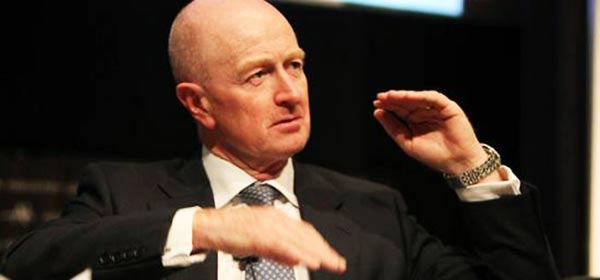Departing Reserve Bank of Australia (RBA) Governor Glenn Stevens used his farewell speech to implore Prime Minister Malcolm Turnbull to borrow and spend to dial up growth.
Mr Stevens believes the nation is in denial over the need for stronger decisions on budget repair and that the Government should take greater responsibility for spurring on economic demand through infrastructure investment.
Mr Stevens believes we can no longer rely on interest rate cuts alone to dial up economic growth and that while cuts still had some effect, they worked by encouraging private borrowers to borrow more.
“In Australia, gross public debt, for all levels of government, adds up to about 40 per cent of GDP. We are rightly concerned about the future trajectory of this ratio. But gross household debt is three times larger – about 125 per cent of GDP. That is not unmanageable – but nor is it a low number. It’s an interesting question which sector would have the greater capacity to take on more debt, in the event that we were to need a big demand stimulus,” said Mr Stevens.
Mr Stevens has held the job as Governor of the RBA for more than a decade and, in the last few years, has declared that Canberra needs to wake up to the challenges facing the nation.
“The case for governments being prepared to borrow for the right investment assets – long-lived assets that yield an economic return – does not extend to borrowing to pay pensions, welfare and routine government expenses, other than under the most exceptional circumstances,” he said.
Read more at www.rba.gov.au
Read more at www.afr.com
Read more at www.smh.com.au
Opinion: Invest in our future
The level of debt held by Government in Australia is always strongly debated in the lead up to Federal elections, with both sides of politics promising to tackle debt levels. I was pleased to see the departing RBA governor yesterday offering a different opinion on debt in his farewell speech.
For the average Australian, taking on a massive home loan debt is seen as move towards securing their financial future. With international lending rates currently so low, it makes sense for the Government to take a similar approach; borrowing more to invest in the assets that will set Australia up for decades of growth.
Previous governments have come out in support of Australian innovation and told small, medium and large businesses to back themselves to succeed. It’s now time for the Australian Government to do the same by preparing to borrow and invest in long-lived assets that will yield an economic return.
What do you think? Should Australia make strategic investments over the next decade with the specific goal of increasing economic growth? Or should we focus on reducing Government debt to $0?
Related articles:
Investment risks explained
How investment savvy are you?

